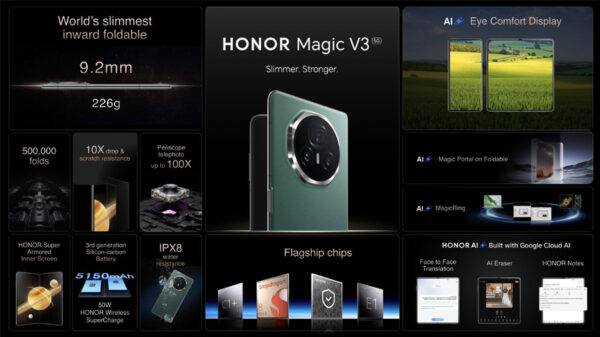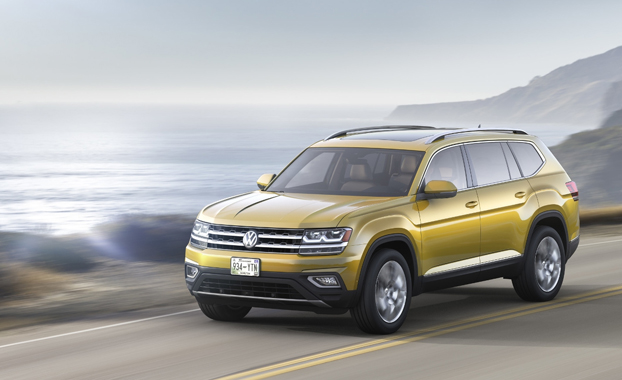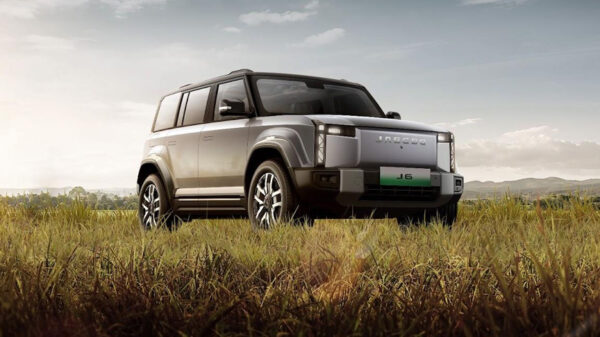The 2018 Atlas was unveiled by Volkswagen.
Engineered from Volkswagen’s Modular Transverse Matrix (MQB) architecture, the Atlas draws on the latest Volkswagen design DNA to create a bold new look in the SUV segment. Atlas measures 198.3 inches long, 77.9 inches wide, and 69.6 inches high. Up front, standard LED headlights and LED Daytime Running Lights combine for a unique visual signature, with optional LED taillights to complete the look.
Inside, the Atlas makes maximum use of its dimensions to offer space for seven adults and their luggage. The third-row can be easily reached by an innovative folding seat solution, one that works even with child seats installed in the second row. Simple, driver-centric displays enhance the feeling behind the wheel rather than distracting from it; while the available Volkswagen Digital Cockpit allows drivers to reconfigure how they view vehicle information.
The available Volkswagen Car-Net system provides a full suite of connected vehicle services, including standard App-Connect technology that offers integration with the three major smartphone platforms—Apple CarPlay, Android Auto and MirrorLink. The vehicle also features an available Fender Premium Audio System that is the most sophisticated yet seen in a Volkswagen, with 12 channels, a 480-watt amplifier and 12 speakers.
The Atlas offers available driver assistance features that had been previously been reserved for premium SUVs, at an affordable level. These include: Adaptive Cruise Control (ACC); Forward Collision Warning and Autonomous Emergency Braking (Front Assist); Blind Spot Monitor with Rear Traffic Alert; Lane Departure Warning (Lane Assist), which actively helps the driver steer the car back into its lane; and Parking Steering Assistant (Park Assist).
Also, the Atlas is the only vehicle in its class to offer the Automatic Post-Collision Braking System. This builds on the premise that a collision is rarely a single, instantaneous action, but rather a series of events that follow the initial impact—the most significant of which can cause additional collisions. The Automatic Post-Collision Braking System addresses this by applying the brakes when a primary collision is detected by the airbag sensors, thus helping reduce residual kinetic energy and, in turn, the chance of additional damage.
The Atlas arrives with a choice of two powertrains: the 2.0-liter turbocharged and direct-injection TSI four cylinder with 238 horsepower or the available 3.6-liter VR6 engine with 280 horsepower. Either engine routes power through an eight-speed transmission to help maximize engine efficiency, and the Atlas can be configured either as front-wheel-drive or with available 4Motion all-wheel-drive in VR6 trims. The 4Motion system has a Driving Mode Selection feature that allows the driver to select specific parameters based on driving conditions. EPA fuel economy estimates will be released ahead of the launch in 2017.








































































































